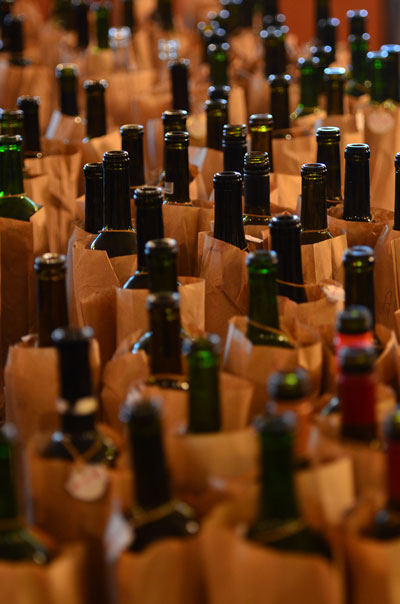In the aftermath of our Best in Glass (BIG) Wine Challenge, there has been a lot of attention paid to the gold medal-winning wines. That attention is certainly well deserved, but let’s not lose sight of just how valuable a silver medal can be.
As you will recall, the Best in Glass winners are selected by a panel of South Florida sommeliers. The wines are all tasted blind and in the final round of judging, our sommelier-judges cast votes for the wines they thought were the best options for pouring by the glass in their restaurants. They were aware of the wholesale price of each wine and price certainly was a consideration, as was each sommelier’s sense of whether a given wine would work in her or his restaurant. This means that the sommelier at an upscale restaurant might not be as attracted to a simple wine that is an excellent value while the sommelier from a wine bar would welcome an obscure grape variety that would require some explanation because in a wine bar setting, there is time to explore with customers. A relatively high-priced cabernet might seem reasonable to a small high-end restaurant and less desirable to a larger restaurant with a more commercial wine list.

To earn a gold medal in the competition, a solid majority of the sommeliers had to vote for a wine. If the vote was, say, 10 for gold and 11 for silver, the wine got a silver medal. But wait! That silver medal-winning wine still got a vote for gold from ten sommeliers, and that is not to be ignored. In fact, most of the wines that earned a silver medal had several votes for gold and to me this means every silver medal wine is a real treasure.
View our list of silver medal wines, and you could have a fun time printing the list and taking it to your favorite wine shop to see what you find. It’s a long list and a thankless task to single out a few wines, but I will note that the Brancaia Tre is a Tuscan blend that is hugely successful at Cibo, one of my favorite wine bars in Coral Gables. I would have given Château St. Maur rosé a gold medal and I know that it got silver from some sommelier-judges only because there were so many excellent rosé wines in the competition this year. This is an assertive and well-balanced rosé that is very much to my taste. Another very popular rosé with some of the judges is the Cubanisimo rosé from Oregon made from pinot noir – I think the vibrant and rather deep color led some somms to think it would be a hard sell as a rosé though other somms loved the flavor and weren’t at all disturbed by the color.
I absolutely love the Edna Valley Vineyard sauvignon blanc. It takes a seductive middle road between the assertive style of a New Zealand sauvignon and a less aromatic wine from the Loire Valley. I had this at a restaurant a couple of weeks ago and thought it was marvelously food-friendly.
Two final wines that I thought deserved gold for their bar-friendly demeanor are a Champagne and a sherry. Canard-Duchéne was for many years a Champagne admired in France but not well known in the export market. That is changing, and to re-introduce it in the U.S. the importer offers it at a very good price for a classic Champagne. The brut nonvintage is a lovely wine worth tasting. Another wine I thought deserved a gold in the competition is the La Gitana Manzanilla. It’s a bone dry sherry and a style of wine that perplexes many sommeliers who are focused on table wines to go with a meal. Manzanilla is the perfect accompaniment to tapas – it has a bracing, crisp attack on the palate that suits everything from jamón to fried artichokes to a bowl of olives. It’s a wine I’d like to see on more restaurant wine lists, especially those with bars that have snacks.
I could go on, but better you print the list and do some experimenting on your own. And I’ll circle back in a few weeks with some other silver suggestions for your summer drinking.
